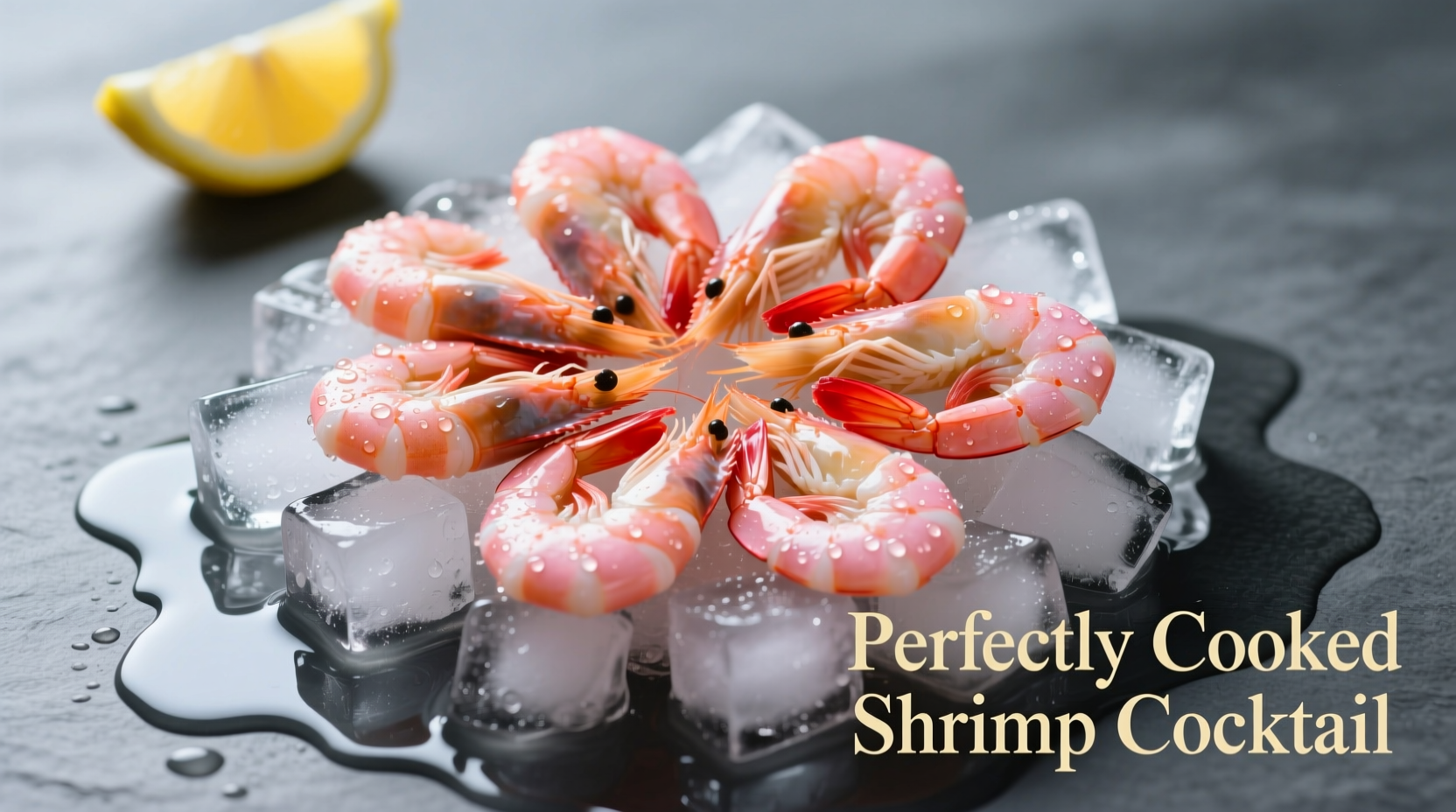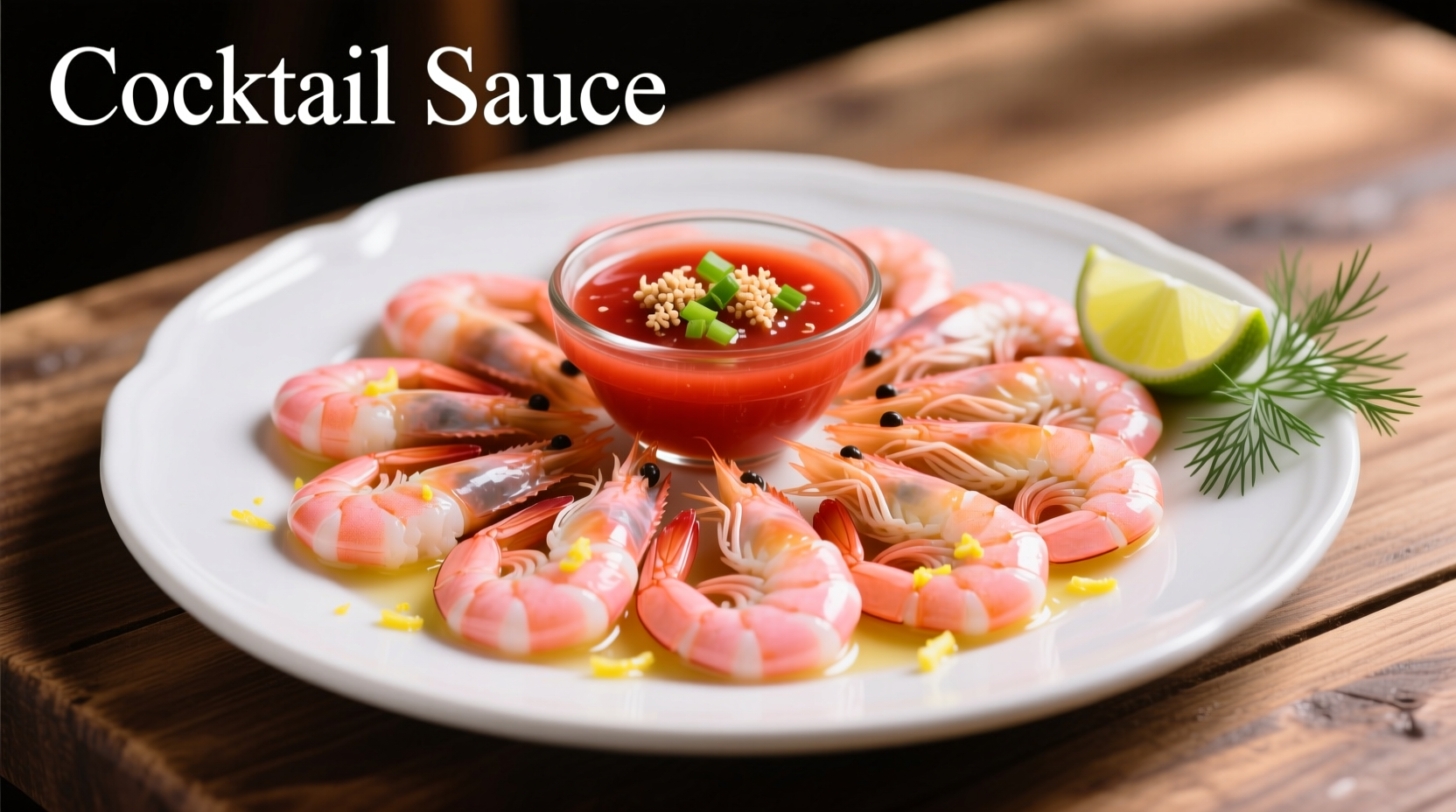Perfectly cooked shrimp for cocktail requires precise timing, proper temperature control, and careful handling to achieve that ideal firm yet tender texture. This guide delivers professional chef techniques for boiling, chilling, and serving shrimp that maintain their delicate flavor while preventing rubberiness - the #1 mistake home cooks make.
The Essential Guide to Perfect Shrimp Cocktail Preparation
When preparing shrimp for cocktail applications, the difference between restaurant-quality results and disappointing rubbery shrimp comes down to precise temperature management and timing. As a chef with extensive experience in seafood preparation, I've seen countless home cooks overcook their shrimp by just 30 seconds, transforming delicate morsels into tough, chewy disappointments. The ideal cooked shrimp should be opaque with a slight curl, firm but yielding to gentle pressure, and maintain that sweet, ocean-fresh flavor without any hint of ammonia.
Why Proper Shrimp Cooking Technique Matters
Shrimp cocktail represents one of the most deceptively simple yet technically demanding seafood preparations. Unlike grilled or sautéed shrimp where you can recover from minor timing errors, boiled shrimp for cocktail offers zero margin for error. The proteins in shrimp begin to denature rapidly at 120°F (49°C), and within just 2-3 minutes at boiling temperature, they can progress from perfectly cooked to overcooked. This narrow window explains why so many home attempts at shrimp cocktail fail to deliver the elegant, tender results found in professional establishments.
| Shrimp Type | Optimal Cooking Time | Texture Indicator | Best For Cocktail? |
|---|---|---|---|
| Medium (31-40 count) | 1.5-2 minutes | Slight "C" shape | ✓ Ideal |
| Large (21-25 count) | 2-2.5 minutes | Open "C" shape | ✓ Excellent |
| Jumbo (16-20 count) | 2.5-3 minutes | "U" shape | ✓ Good |
| Extra Jumbo (10-15 count) | 3-3.5 minutes | Straightened | △ Acceptable |
The Critical Pre-Cooking Preparation
Before you even consider heating water, proper shrimp selection and preparation determines 70% of your success. Start with fresh, never frozen shrimp when possible - look for firm flesh that springs back when pressed, with a clean ocean scent rather than ammonia. For frozen shrimp, thaw overnight in the refrigerator rather than using quick-thaw methods that damage texture. Always devein shrimp before cooking, as the digestive tract can impart bitterness during the cooking process.
The salt concentration in your cooking liquid proves equally crucial. Research from the Food Science Department at Cornell University confirms that a 4% salt solution (about 1/4 cup kosher salt per quart of water) helps maintain shrimp texture by partially dissolving muscle proteins before they can over-tighten during cooking. This scientific approach prevents the common problem of rubbery shrimp by creating a more forgiving cooking environment.

Step-by-Step Cooking Process
Step 1: Prepare the cooking liquid - Fill a large pot with enough water to cover shrimp by 2 inches. Add 1/4 cup kosher salt and 2 tablespoons lemon juice per quart of water. Bring to a rolling boil.
Step 2: Shock the shrimp - Place shrimp in a mesh strainer and lower into boiling water for exactly 10 seconds, then immediately remove. This initial shock helps prevent overcooking by starting the denaturing process gently.
Step 3: The critical cooking phase - Return water to boil, then add shrimp. Set timer immediately: 1.5 minutes for medium shrimp, 2 minutes for large, 2.5 minutes for jumbo. Shrimp are done when they turn opaque and form a loose "C" shape.
Step 4: Immediate chilling - Transfer shrimp directly to an ice bath (equal parts ice and water) for at least 5 minutes. This stops the cooking process instantly - skipping this step causes residual heat to continue cooking the shrimp.
Avoiding Common Shrimp Cocktail Mistakes
Many home cooks make the critical error of leaving shrimp in the cooking water too long or failing to chill them properly. The National Oceanic and Atmospheric Administration (NOAA) seafood handling guidelines emphasize that seafood continues to cook at temperatures above 140°F (60°C), meaning that even after removing from heat, shrimp will overcook if not chilled immediately.
Another frequent mistake involves using warm serving dishes. Professional chefs always chill serving platters in the freezer for 15 minutes before arranging shrimp. This simple technique maintains optimal serving temperature (38-40°F or 3-4°C) which preserves texture and prevents bacterial growth during service.
Serving Your Perfect Shrimp Cocktail
For presentation worthy of fine dining establishments, arrange shrimp on a bed of crushed ice with lemon wedges and fresh dill. Serve cocktail sauce chilled but not frozen - the ideal temperature allows flavors to express fully. When preparing cocktail sauce, mix ketchup, horseradish, lemon juice, and Worcestershire sauce at least 2 hours before serving to allow flavors to meld properly.
Remember that shrimp cocktail should showcase the shrimp itself, not overpower it with sauce. The traditional presentation places shrimp around the rim of a chilled glass with sauce in the center - this arrangement lets guests appreciate the quality of your perfectly cooked shrimp before dipping.











 浙公网安备
33010002000092号
浙公网安备
33010002000092号 浙B2-20120091-4
浙B2-20120091-4